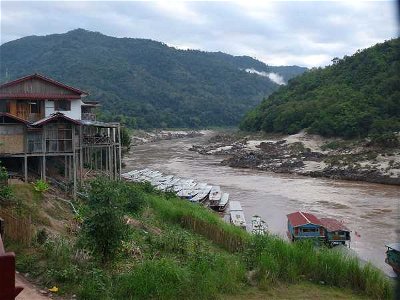2. The Laotian capital, Vientiane, is located on which river, that is the 12th longest river in the world and whose delta played a major role in the Vietnam War?
From Quiz Laos - Land of a Million Elephants
Answer:
Mekong
The Mekong River runs from China through Burma (Myanmar), Laos, Thailand, Cambodia, and Vietnam. The Mekong forms the border between Burma and Laos, then turns east to form part of the border between Thailand and Laos. From there it enters Laos before again returning to form the border between Thailand and Laos. Finally, it joins the Mun River right before entering Cambodia. It flows through Cambodia to Vietnam. In Vietnam, it divides into nine channels that form the Mekong Delta, which empties into the South China Sea. In 1995, Cambodia, Laos, Thailand, and Vietnam formed the Mekong River Commission to manage and coordinate use of the river. In 1996, China and Burma became dialogue partners in the commission so that now all six countries cooperate in sharing the resources of the river.
Vientiane first became the capital when King Setthathirath moved the capital of the kingdom of Lan Xang, the kingdom founded by Fa Ngum in 1354 AD, there in 1563 to avoid invasion from Burma. The national Laotian epic the "Phra Lak Phra Lam", which is based on the Hindu epic the "Ramayana", maintains that Prince Thattaradtha founded the city because a seven headed Naga, a Hindu deity, told him to. In 1707, Vientiane became its own kingdom and remained independent until 1828 when it was annexed by Siam. In 1893, it became part of the French protectorate of French Indochina along with the kingdoms of Luang Phrabang and Champasak. These three Lao kingdoms were then named Laos by the French and the modern country of Laos was born.
 How much do you know about the beautiful and interesting geography of the Asian country of Laos? Enjoy!
How much do you know about the beautiful and interesting geography of the Asian country of Laos? Enjoy!  = Top 5% Rated Quiz,
= Top 5% Rated Quiz,
 Top 10% Rated Quiz,
Top 10% Rated Quiz,
 Top 20% Rated Quiz,
Top 20% Rated Quiz,
 A Well Rated Quiz
A Well Rated Quiz